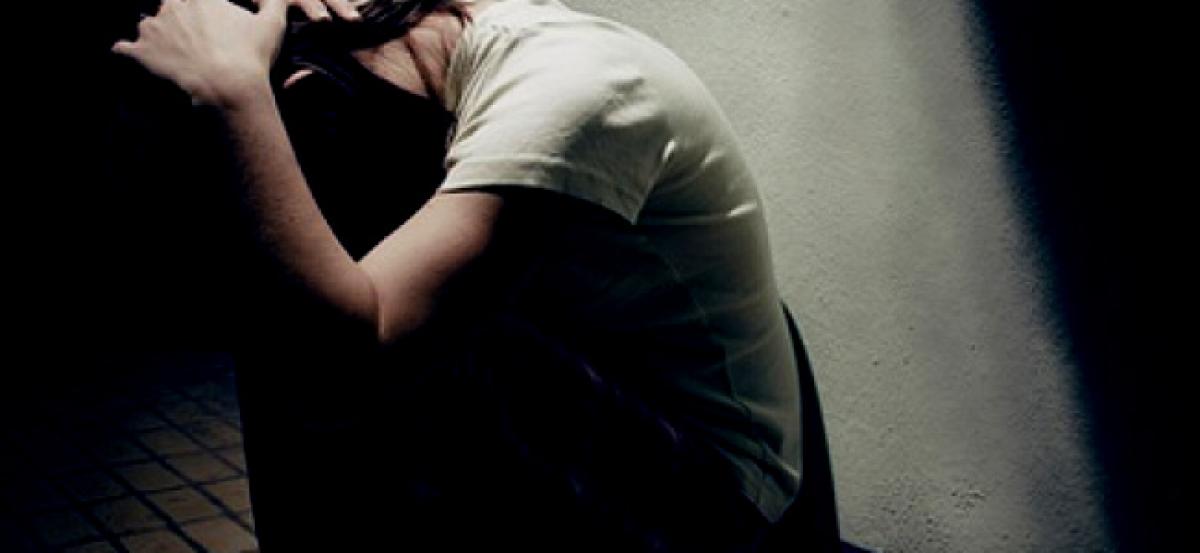Live
- SBI rescues sr citizen from `46L cyber fraud
- 12-yr-old dies of electrocution
- Installation of smart meters opposed
- State Cabinet expansion in focus as CM leaves for Delhi
- Need to reintroduce country’s forgotten pride: Bhagwat
- Pant shatters Iyer's IPL auction record, sold to Super Giants for Rs 27 cr
- Yuva Sangeetha Sammelanam held
- Dharani proves a bane for 25K families across State
- Reckless, Dangerous Arms Race
- Russia needs a peace deal as it is running out of soldiers
Just In

People bereaved by suicide of a friend or family member are 65 per cent more likely to kill themselves than the ones whose relatives died of natural causes, a new study has claimed.
London: People bereaved by suicide of a friend or family member are 65 per cent more likely to kill themselves than the ones whose relatives died of natural causes, a new study has claimed.
People coming in contact with ones displaying self-destructive behaviour are more likely to show a suicidal tendency.
It is common among vulnerable people - especially teens and young adults. This is called "suicide contagion." Contagion includes indirect as well as direct exposure to suicide, as Health and Human Services explains.
Reading a newspaper article about a famous suicide and not just directly experiencing the death of a friend or an attempt made by a family member might propel someone who is at-risk to follow suit.
The researchers from University College London (UCL) studied 3,432 UK university staff and students aged 18-40 who had been bereaved, to examine the specific impacts associated with bereavement by suicide.
As well as the increased risk of suicide attempt, those bereaved by suicide were also 80 per cent more likely to drop out of education or work.
In total, 8 per cent of the people bereaved by suicide had dropped out of an educational course or a job since the death.
"Our results highlight the profound impact that suicide might have on friends and family members," said study author Alexandra Pitman from UCL.
"However, these outcomes are by no means inevitable. If you have been bereaved by suicide, you should know that are not alone and support is available," Mr Pitman said.
"We know that people can find it difficult to know what to say to someone who has recently been bereaved. However, saying something is often better than saying nothing, and simple gestures like offering practical help with day-to-day activities can mean a lot.
The study also found that people who had been bereaved by suicide tended to perceive more social stigma around the death.
When the results were adjusted for perceived social stigma to reflect this, the significant differences in suicide attempts and occupational functioning disappeared.
This suggests that addressing the social stigma attached to suicide bereavement might be one way to help to limit its impact on people's lives.
"People bereaved by suicide should not be made to feel in any way responsible, and should be treated with the same compassion as people bereaved by any other cause," said Mr Pitman.
"Suicide is a complex issue and there is often no simple explanation for why someone chooses to take their own life," Mr Pitman said.
"Although one often hears people refer to a relationship break-up or a redundancy as the trigger for a suicide, this is far too simplistic and in reality it is often a culmination of different life events rather than one individual 'cause'," she said.
Previous studies have shown family history of suicide to be a risk factor for suicide attempt, so risk assessments in hospitals, prisons and social care settings are designed to take this into account.
However, the new study suggests that a history of suicide among non-blood relatives and friends should also be considered when assessing suicide risk.
The study was published in the journal BMJ Open.

© 2024 Hyderabad Media House Limited/The Hans India. All rights reserved. Powered by hocalwire.com







